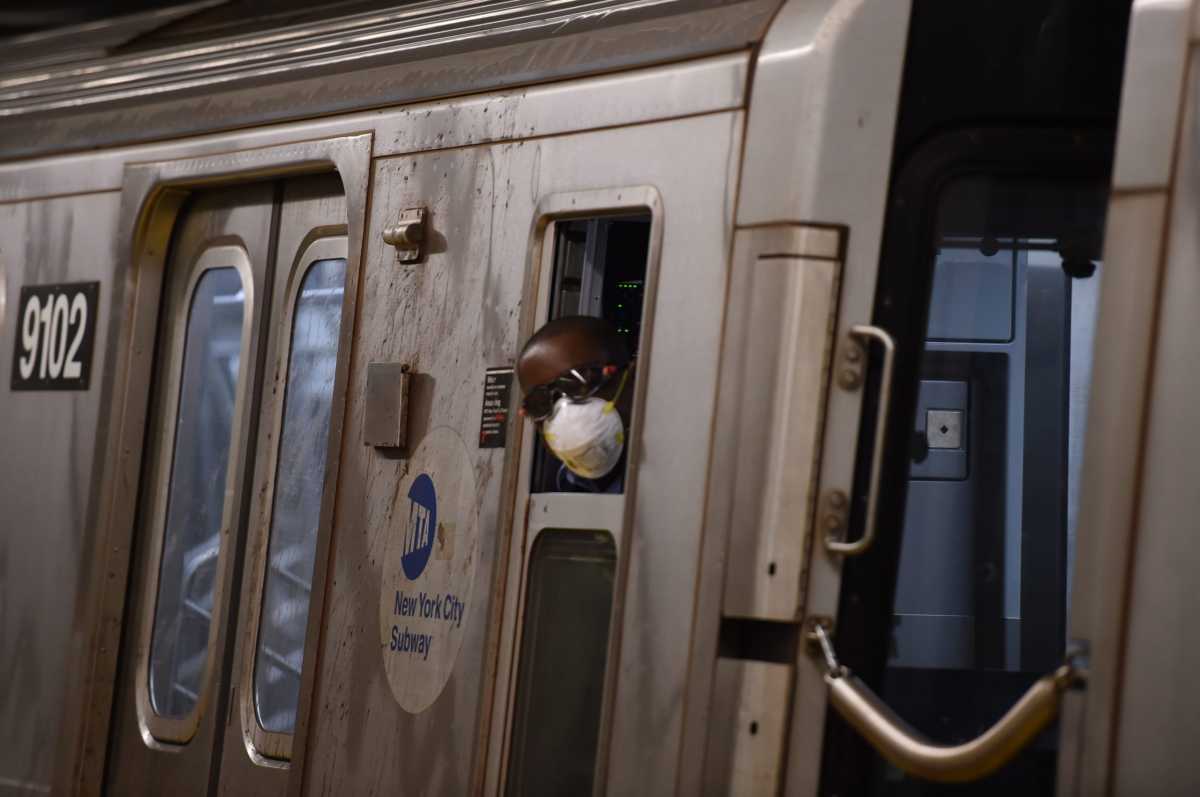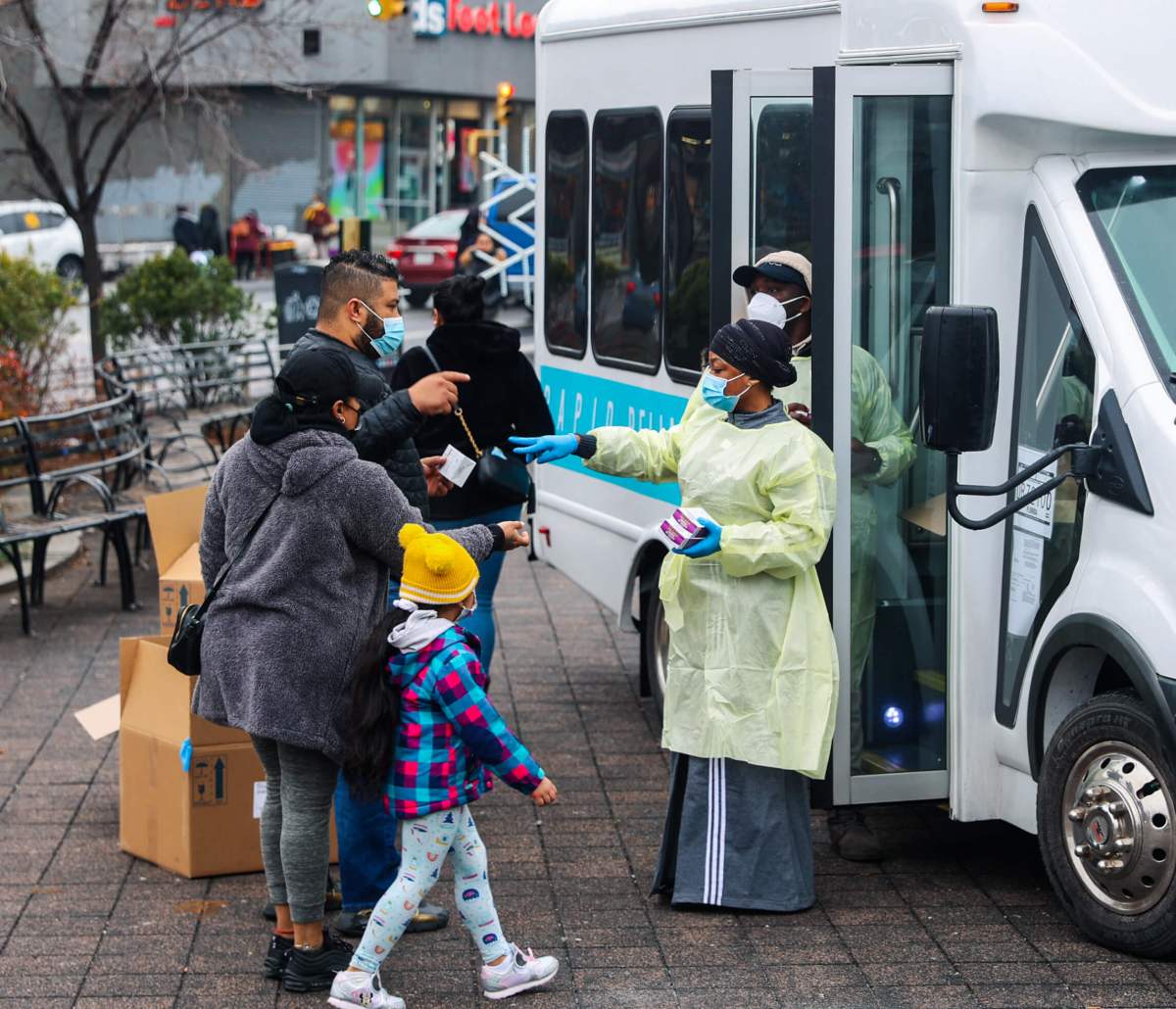New Yorkers might need to “improvise” to get around town once the city reopens, Mayor Bill de Blasio said Friday — a statement that sparked a stern rebuke from the interim New York City Transit President.
But the situation gained a bit more clarity later in the afternoon when Governor Andrew Cuomo announced the MTA would spend the next week gearing up for the anticipated reopening of New York City, which is on track for June 8.
During his daily press briefing on May 29, the mayor said the city wants to make sure the subways and buses “are safe as possible” for all riders once COVID-19 restrictions are eased. But he cast some doubt that the MTA will be ready to meet the transportation needs of New York City once the first phase of reopening begins.
Friday, the mayor said he wanted to be “honest about the fact that .. there’s not always the chance to help everyone all the time in terms of their transportation needs” once reopening starts.
“We’re going to work with them (the MTA) because we all have to get that done together,” de Blasio said. “But again, our job is to wherever we can find a solution, we’re going to find one. I think New Yorkers are very resourceful. They also find their own ways to get things done. … People are going to have to improvise, and I believe they will.”
The mayor’s remarks left Sarah Feinberg, the MTA’s interim New York City Transit president, befuddled.
“With all due respect. [sic] We have no idea what the mayor is talking about,” Feinberg tweeted Friday morning. “The MTA has briefed City Hall multiple times on reopening, including another productive meeting held just yesterday. If the Mayor has questions, he can pick up the phone and call us at any time.”
De Blasio did mention his meeting with MTA officials on Thursday, but “we’re still not getting the answers we need.” He told reporters that he was scheduled to speak Friday with MTA Chair & CEO Pat Foye to figure out “how to make the subways and buses not only as clean as possible” but also to ensure “there’s maximum service level” and social distancing in place.
Soon after the COVID-19 pandemic gripped New York, subway and bus ridership plunged more than 90%. The MTA implemented a cleaning program in which every subway car was disinfected every 72 hours, and shifted to a reduce service schedule to keep essential workers moving. All MTA workers were ordered to wear masks and/or other protective gear.
They even changed the way bus riders board to protect the drivers; the MTA has lost more than 100 employees to COVID-19. To shield drivers, the MTA forced riders to board through the rear doors, and closed off the first few rows of seats.
Earlier this month, the authority went a step further by shutting down the city’s subway system overnight for the first time in history to ensure daily cleaning of every subway car and station.
Ridership is now creeping back up across the city as the number of COVID-19 cases continue to drop, but the MTA’s “Essential Service” schedule remains in effect. Feinberg said in a CNBC interview Wednesday that weekday ridership is increasing between 10,000 and 20,000 daily.
Even so, New York City is not fully reopen yet; it’s the last region in New York state yet to enter the state’s Phase 1 guidelines, which would allow construction, manufacturing and some retail activity to resume.
On Thursday, de Blasio said the Phase 1 reopening — which he expects will happen in early June — will bring between 200,000 and 400,000 New Yorkers back to work.
The MTA says it stands by the remarks in Feinberg’s tweet. Foye also went on to blast the “latest guidance” from the Centers for Disease Control, which advised residents not to take public transportation during the pandemic.
“Encouraging people, especially those without cars and in congested areas like New York, not to take public transit is misguided,” Foye stated. “Transit is, and has long been, the safest way to move around any city. Our transit and bus system is cleaner and safer than it has been in history, as we clean and disinfect around the clock. Everyone who rides the MTA is required to wear a mask, a uniform policy we adopted for our workforce before the CDC reversed its previous guideline and recommended all Americans wear masks. We will continue to take every possible action to protect public health and safety, and the federal government telling people not to ride mass transit sets us back decades.”




































